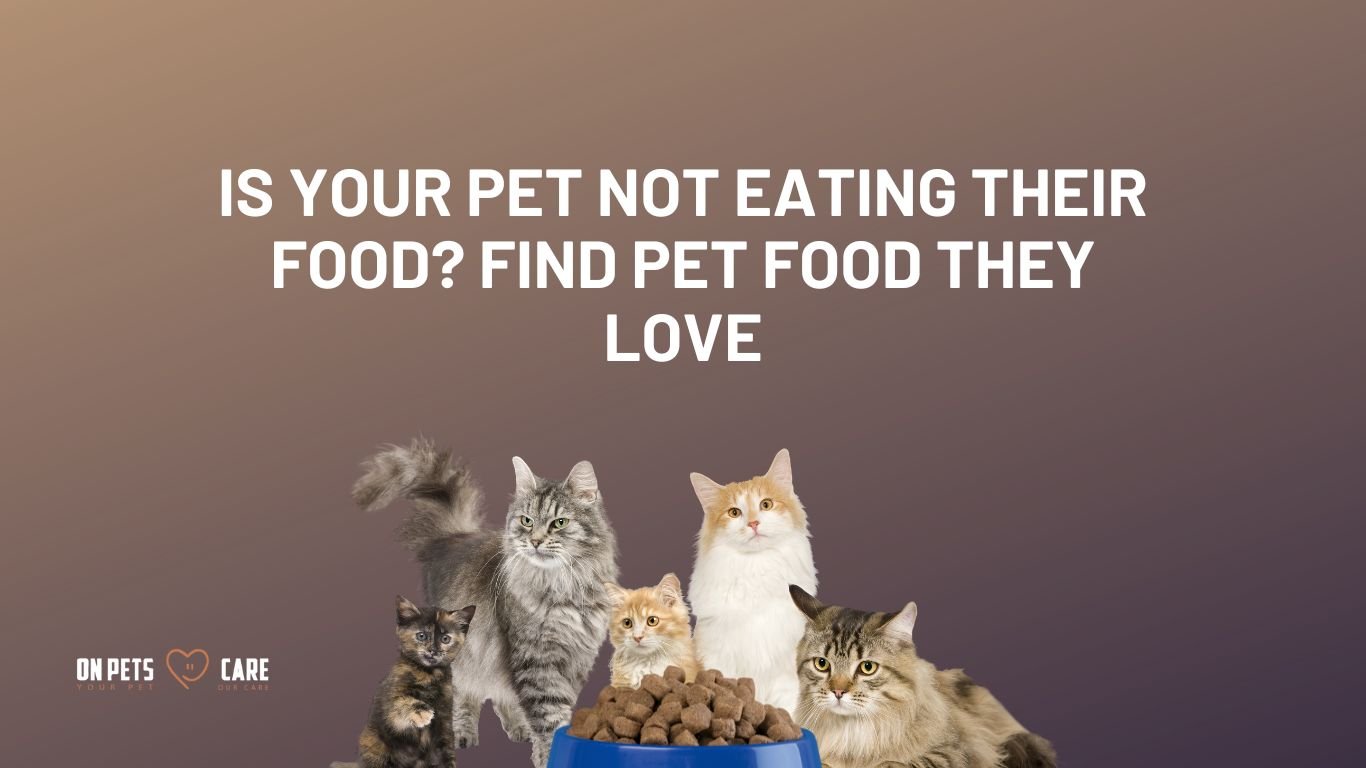Is Your Pet Not Eating Their Food? Find Pet Food They Love
In today’s pet-loving world, nothing is more concerning than when your furry friend turns their nose up at their meal. It’s a common scenario – you scoop out their regular pet food, and they give you that unmistakable look of disdain. As pet owners, we want nothing more than to see our pets happy and well-fed. So, when they refuse to eat their food, it’s natural to worry. But fret not; we’ve got you covered.
In this comprehensive guide, we’ll delve into the world of pet food specifically focusing on pet dry food, and explore ways to ensure your pet not only eats but relishes their meals. From understanding your pet’s preferences to selecting the right food and providing top-notch care, we’ve got all the answers you need.
Understanding Why Your Pet Rejects Pet Dry Food
Dental Issues
Dental problems can make chewing painful for your pet, causing them to avoid pet dry food. Regular dental check-ups are crucial to address this issue.
Health Problems
Underlying health conditions may lead to a lack of appetite. Consult your vet to rule out any medical issues.
Food Allergies
Pets can develop allergies to certain ingredients in their pet food. Identifying and eliminating allergens is key to solving this problem.
The Role of Pet Food in Their Well-being
Balanced Nutrition
Ensure your pet’s food provides the right balance of nutrients for their age and breed.
Dietary Requirements
Different pets have different dietary needs. Tailor their food to suit their specific requirements.
Age and Activity Level
Adjust their food based on age and how active they are to maintain a healthy weight.
Choosing the Right Pet Dry Food
Premium vs. Budget Options
Explore the advantages of premium pet food and decide what fits your budget.
Reading Labels
Learn how to decipher pet food labels to make informed choices.
Introducing Variety in Their Diet
Rotating Flavors
Keep mealtime exciting by offering a variety of flavors and textures.
Mixing Wet and Dry Food
Blend wet and dry pet food to enhance taste and nutrition.
Ensuring a Proper Feeding Schedule
Portion Control
Avoid overfeeding and maintain a consistent feeding schedule.
Avoiding Free Feeding
Leaving pet food out all day can lead to picky eating habits.
Creating a Positive Feeding Environment
Clean Bowls and Utensils
Ensure your pet’s dishes are clean to avoid food aversion.
Reducing Stress
Minimize stress during mealtime by creating a calm environment.
Homemade vs. Commercial Pet Food
Pros and Cons
Consider the benefits and drawbacks of homemade and commercial pet food.
Supplementing Their Diet
Natural Additions
Learn about safe and healthy supplements to enhance their diet.
Consultation with a Vet
Always consult your vet before introducing new supplements.
Transitioning to New Food
Gradual Change
Switching foods should be done gradually to prevent digestive upset.
Monitoring Their Reaction
Watch for any adverse reactions during the transition.
The Importance of Water
Hydration for Health
Adequate water intake is vital for your pet’s overall health.
Regular Veterinary Check-ups
Early Detection of Issues
Regular vet visits can help catch and address health problems early.
Exercising for Appetite
Active Pets Eat Better
Regular exercise can boost your pet’s appetite.
Pet Food Storage
Freshness Matters
Proper food storage ensures the food remains palatable and safe.
Patience and Consistency
Giving It Time
Be patient and consistent in your efforts to improve your pet’s eating habits.
When to Seek Professional Help
Persistent Food Aversion
If your pet’s refusal to eat persists, consult a veterinarian.
Weight Loss and Health Concerns
Address any weight loss or health issues promptly.
Now that we’ve covered these essential aspects, you’re well-equipped to tackle your pet’s finicky eating habits. Remember, every pet is unique, so it may take some trial and error to find the perfect pet food they love. Your pet’s health and happiness are worth the effort.
Frequently Asked Questions (FAQs)
1. How can I make my pet’s dry food more appealing?
You can try mixing it with wet pet food, warming it slightly, or adding a sprinkle of their favorite treat as a topper.
2. Are homemade pet food diets better than commercial options?
Homemade diets can be beneficial but require careful planning to ensure they meet your pet’s nutritional needs. Consult with your vet before making the switch.
3. My pet suddenly stopped eating. What should I do?
Monitor your pet for any signs of illness or discomfort. If the issue persists, consult your veterinarian promptly.
4. Should I be concerned if my pet is a picky eater?
- Mild pickiness is common, but if it leads to weight loss or health problems, it’s essential to address it with your vet.
5. Can I change my pet’s food brand abruptly?
It’s best to transition gradually to avoid digestive issues. Mix a small amount of the new food with the old, gradually increasing the new food‘s portion over a week or so.
With these insights and tips, you’ll be on your way to finding the pet food that will have your furry companion eagerly anticipating mealtime once again. Remember, a well-fed pet is a happy and healthy one.



